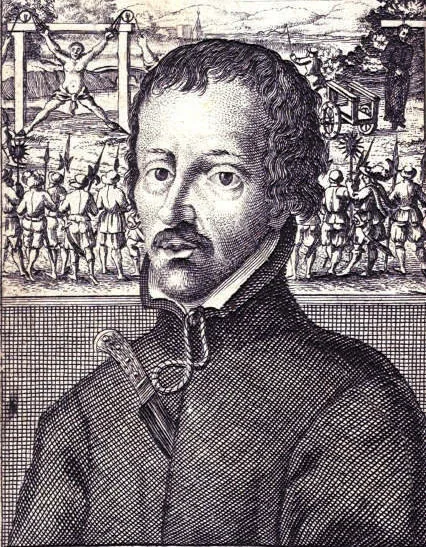December 1st marks the feast of a beloved, but not well-known saint. His name is St. Edmund Campion, SJ.
In 1540, Edmund was born to nominal Catholic parents. With King Henry VIII on the throne and head of his own church, English Catholics found their faith ridiculed. This allowed many parents, including Edmund’s, to nominally practice their faith either due to fear, laxity, or hindrance in receiving the sacraments.
Edmund grew up to be an excellent scholar. He was both a student and teacher at Oxford University. It was there that his Latin oration would impress the young Queen Elizabeth I. In 1568, he was ordained to the deaconate in the Anglican Church, and he received the special patronage of the Earl of Leicester.
After visiting relatives in Ireland, Edmund Campion began to experience a conversion, which led him to embrace the Catholic Faith. With this change, he felt an even greater calling, which was to become a priest.
Edmund Campion decided to join the Society of Jesus. Due to the persecution of Catholics within England, he studied in France at the English College at Douai.
Throughout his years of study, England began a transformation. The sacraments became unavailable to the Catholic laity as priests and religious were expelled from England. The English monarchy hoped that this would obliterate Catholicism within a generation or two.
With young men studying abroad to become priests, this dream would falter. Many, just as St. Edmund Campion did, returned to their home country to continue cultivating Catholicism within England.
In 1580, Fr. Campion and his friend, Fr. Robert Persons (also known as Fr. Parsons, SJ), would journey back to England to minister to the Catholic faithful. They were accompanied by Brother Ralph Emerson, SJ, with a total party of fourteen.
It is important to note that these men, along with many of their priestly brothers, were aware of the fate they would eventually meet.
The English writer, Evelyn Waugh writes, “A Salesian Father, James Gall, an ecstatic, came to the door of Campion’s cell, on the eve of his departure, and inscribed above it P. Edmundus Campianus Martyr. . . another Father had painted the emblem of martyrdom, a garland of roses and lilies, on the wall at the head of Campion’s bed.” (Edmund Campion: A Life, 87).
Despite constant danger, Fr. Campion quickly melded into his pastoral work. He avoided political implications as much as possible to better serve God’s people. Like many of the Jesuit priests who would later serve and shed their blood on English soil, Campion would disguise himself as he traveled from home to home ministering the sacraments.
In 1581, Fr. Campion’s intellect became engaged in more than just the sacraments. In defense of the Catholic Church and her teachings, he penned a letter — Challenge to the Privy Council. For modern scholars, it can be found under the title, “Ten Reasons Proposed to His Adversaries for Disputation in the Name of the Faith and Presented to the Illustrious Members of our Universities.”
When it was circulated in 1581, it quickly received the infamous name, Campion’s Brag. This remarkable work is considered to be one of the earliest defenses of the Catholic Faith during the English Reformation.
This same year, Fr. Campion would be betrayed by a man named Eliot. He would pose as a faithful Catholic to capture priests and those who assisted them.
St. Edmund Campion was held and tortured in the Tower of London for four months. He was offered reconciliation with Queen Elizabeth, due to her favor of him in his youth. He denied this. He was constantly challenged in theological debates to undermine his Faith. Lastly, his enemies quickly circulated lies of his confession and conversion to Protestantism to deter English Catholics.
On November 20, 1581, Campion valiantly faced his predetermined trial. He was sentenced to death at the Tyburn for his Catholic Faith.
On December 1, 1581, the Queen’s proclamation read that Fr. Campion was being executed for treason and not religion. A drastic conversion occurred that day of Henry Walpole, who witnessed Fr. Campion’s martyrdom and was sprinkled with his blood. He would later make his own way to the Tyburn Tree, which testified to St. Edmund Campion’s tenacity and faithfulness to the true Crown — the King of all Kings.






